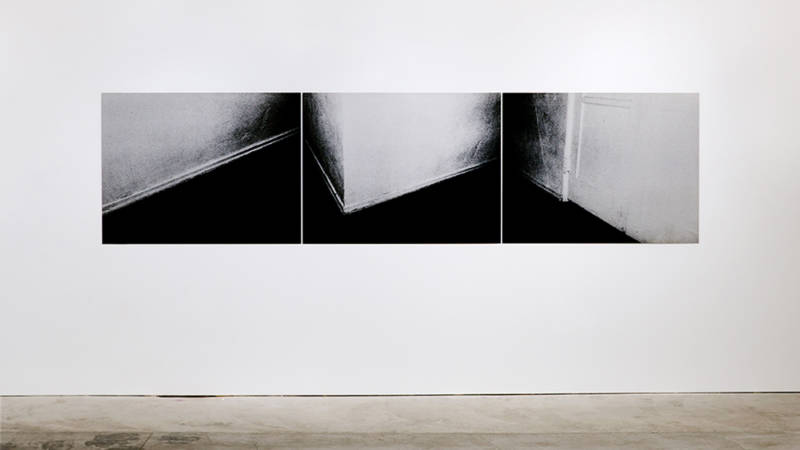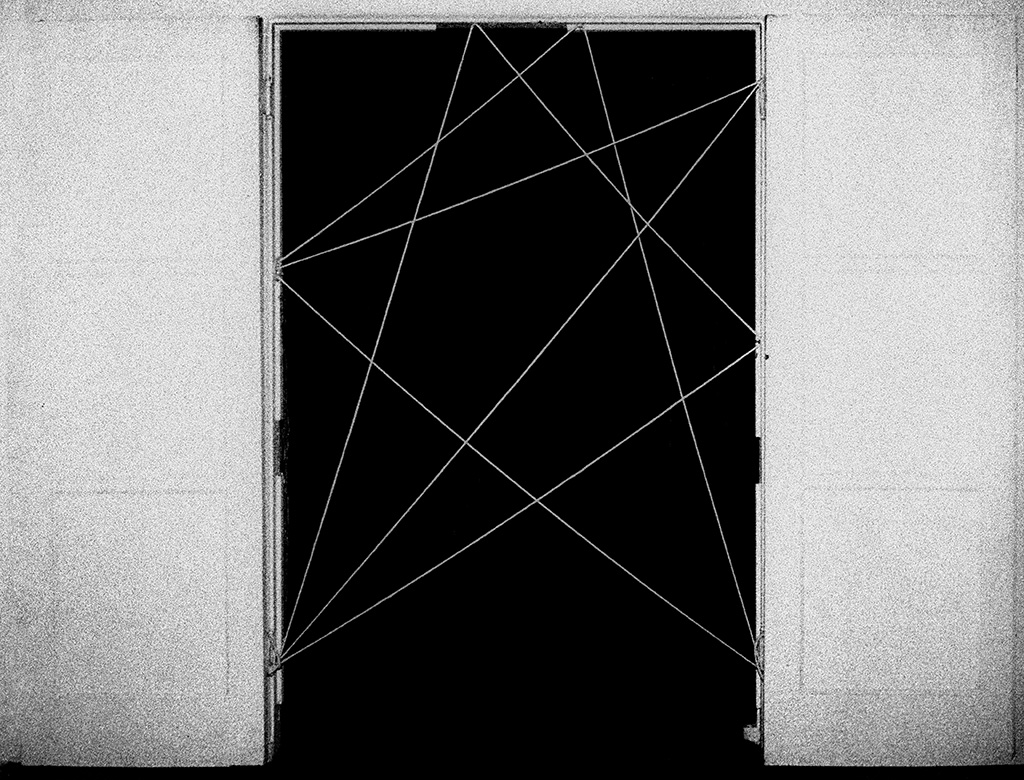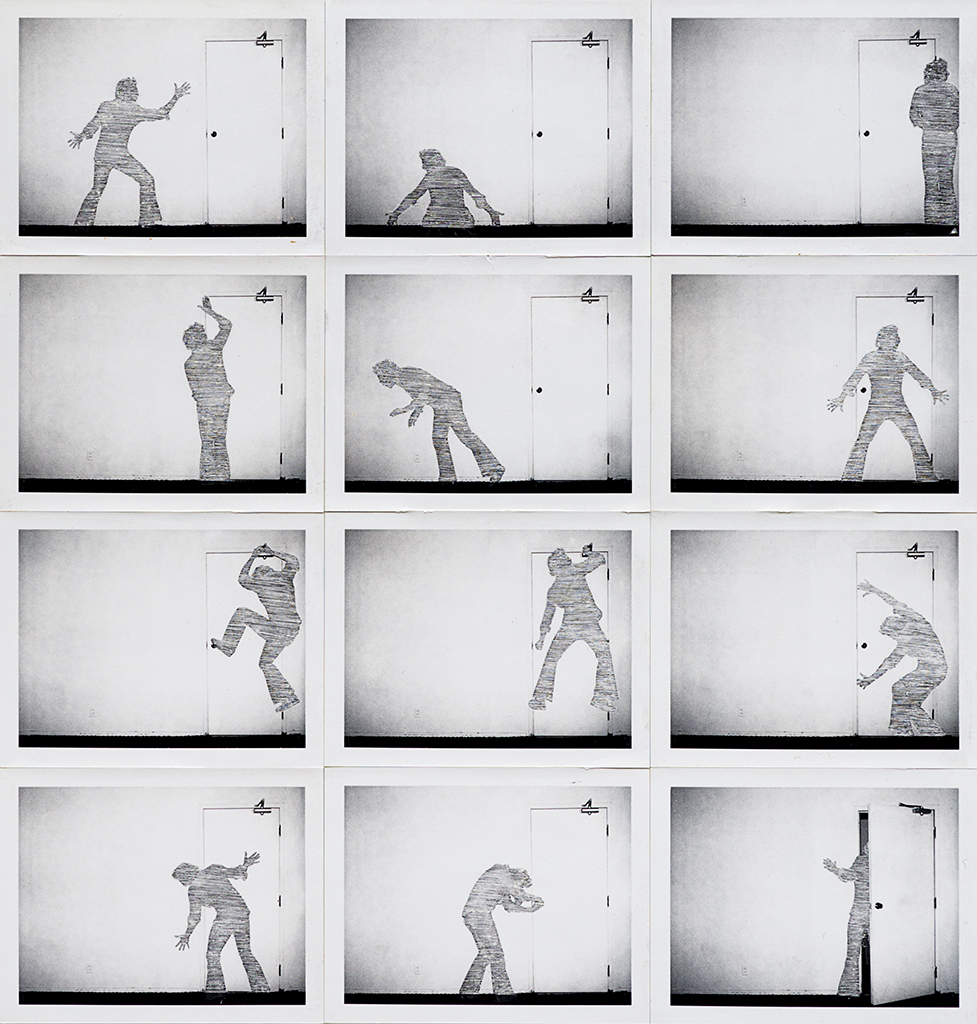I didn’t plan on seeing this show. Sometimes you go looking for one thing and you find another. What’s that saying? When one door closes, another door opens. Cringe at this hackneyed utterance, but it just so happens to be the perfect analogy for Steve Kahn’s sleek solo show at Casemore Kirkeby, Mural Triptychs & Door/Window Constructions — and not just because his subject matter includes doors.
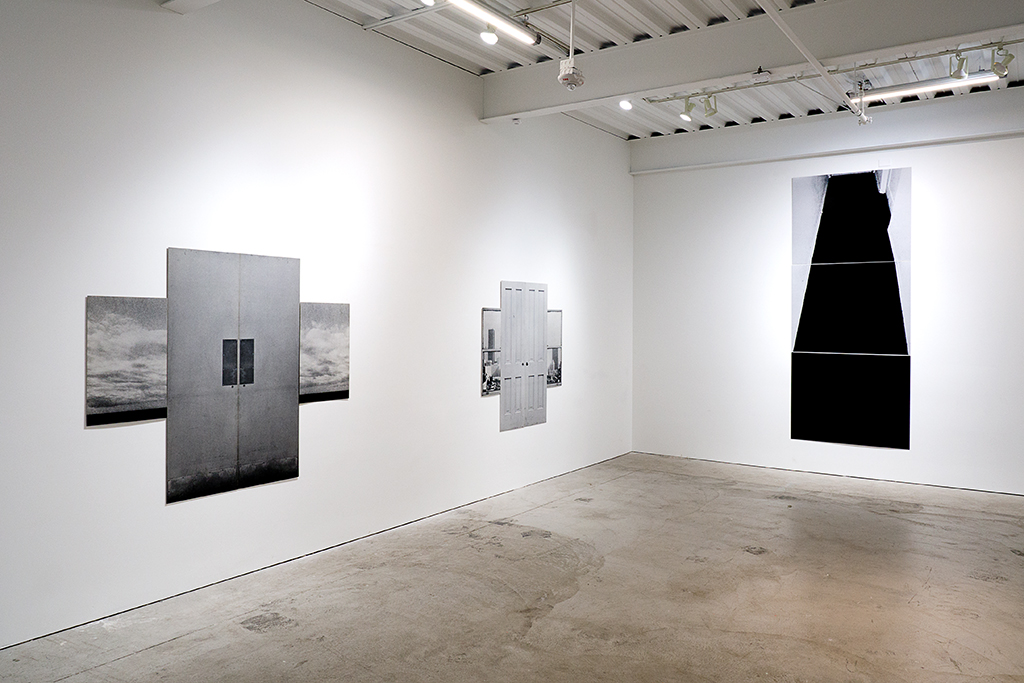
In 1970s Hollywood, Kahn made a bit of extra money by shooting photographs for a bondage magazine in run-down rent-by-the-day one-room apartments. That commercial work parlayed into photographs of a more artistic sort, and one day, when a hired model didn’t show up, Kahn photographed the empty room itself. (When one door closes…)
“The container became more interesting than the content it contained,” he says of the series, which he calls The Hollywood Suites. These works, on view at Casemore Kirkeby for the first time in 35 years, are remarkably contemporary, in part because Kahn’s prints, with their luscious blacks and analog graininess, look fantastic (dare I say, sexy?), and in part because the psychological space of interiors is infinitely, timelessly rich. (Local practitioners Amy M. Ho and Cybele Lyle consistently mine that field to excellent results.)
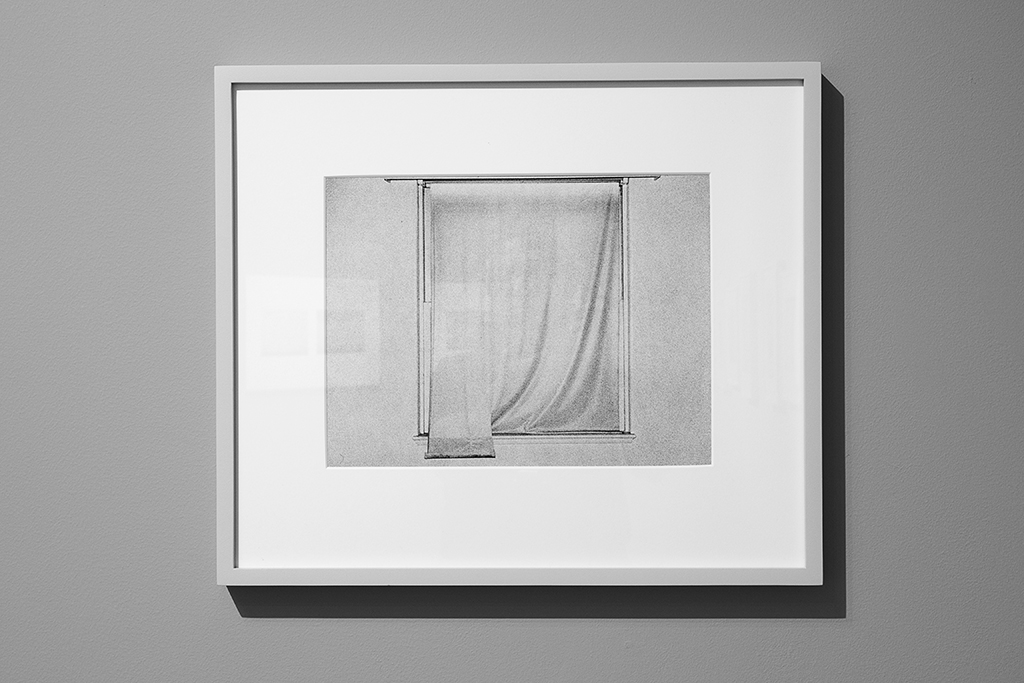
Kahn’s vintage prints of doors, windows, corners, hallways and missing mirrors are devoid of almost any signs of life. The geometric edges of these dark-carpeted, dingy-walled spaces become segmented and scrambled as Kahn arranges Polaroids and gelatin silver prints in orientations that may or may not resemble the actual rooms he photographed.
The effect is claustrophobic and disconcerting. Did terrible things happen at the site of these high-contrast images? Or, to a lesser degree, do the Hollywood suites capture feelings of isolation and desperation? In Quadrant #1 (below), four Polaroids in a grid create a fictitious view into a carpeted, four-walled and totally enclosed space. It’s a room with no entry and no exit; the possibility of another door opening isn’t even an option here. Similarly, Triptych #10 shows a wall that appears real enough, but something about the scale is strange — the angles of the corners seem improbable.
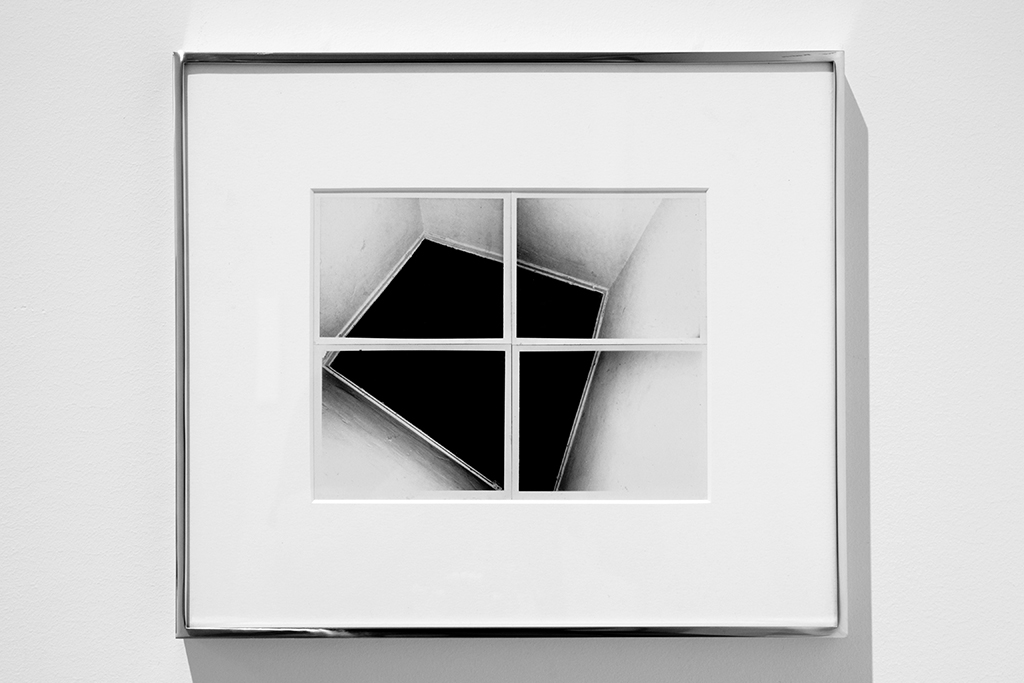
By rephotographing his Polaroids with 35mm film, and in turn, rephotographing those gelatin silver prints with a large-format camera, Kahn created “generations” of his own images, scaling up output at each turn. And yet, each iteration retains some of the initial immediacy of the Polaroid. Kahn replaces the white edges of his Polaroids with thin strips of mat board or slight spaces between his aluminum-mounted prints.
